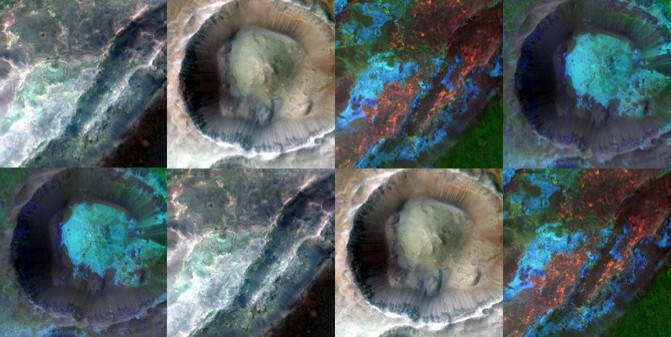Mars Clay Suggest Martians Would Have Lived Underground

If life ever existed on Mars it would probably have been underground, according to new interpretations by NASA scientists.
Europeans and NASA orbiters have been examining more than 350 sites on the Red Planet's surface. The evidence says that water was abundant at the surface of Mars, but only for brief periods. Studies of Martian clay suggest warm water did interact with subsurface rock for hundreds of millions of years though.
"The types of clay minerals that formed in the shallow subsurface are all over Mars," John Mustard said, professor at Brown University. He is a co-author of the study in the journal, Nature. "The types that formed on the surface are found at very limited locations and are quite rare."
The problem is with Mars' atmosphere. The fourth planet was once a warm wet place. But it needed a much thicker atmosphere than it has today to keep the water from evaporation or freezing. Scientists once thought that Mars had this type of atmosphere but lost it over time.
A new theory has come to the surface that states most of the water was subterranean.
"If surface habitats were short-term, that doesn't mean we should be glum about prospects for life on Mars, but it says something about what type of environment we might want to look in," Bethany Ehlmann, a scientist at NASA's Jet Propulsion Laboratory and lead author of the report, said on NASA's Web site. "The most stable Mars habitats over long durations appear to have been in the subsurface. On Earth, underground geothermal environments have active ecosystems."
The evidence is based mostly on studies of Mars' clay. Since clay forms when it interacts with rock, different types of clay are made depending on the ratio of water. When rock is exposed to high amounts of water, most of the water-soluble elements are carried off leaving aluminum-rich clay.
However, most of the clay on Mar's surface is abundant in iron and magnesium. That means the clay has retained chemistry similar to volcanic rock which initially helped form Mars. Since the surface clay is mostly in its original state it didn't interact much with water.
Another clue is the high amounts of a mineral called prehnite found on the planet. It is usually formed in extremely hot underground hydrothermal environments, but is not typical of surface water.
The one big exception to this underground water rule may be Gale Crater. Later this year, scientists will launch a probe to investigate the layers of rock in the crater that may yield some new evidence. And another 2013 launch, Mars Atmosphere and Volatile Evolution Mission, or MAVEN, may discover evidence that disproves this new theory.
For now scientists speculate if any aliens existed on Mars, they were subterranean. But no clue if they were homesick.
© Copyright IBTimes 2024. All rights reserved.




















